Co Loa Citadel is recognized as Vietnam’s oldest fortress, built to serve as the capital of the Au Lac Kingdom during the 3rd century BC. This remarkable site was a key political center for the Vietnamese people and remained important until the 10th century.
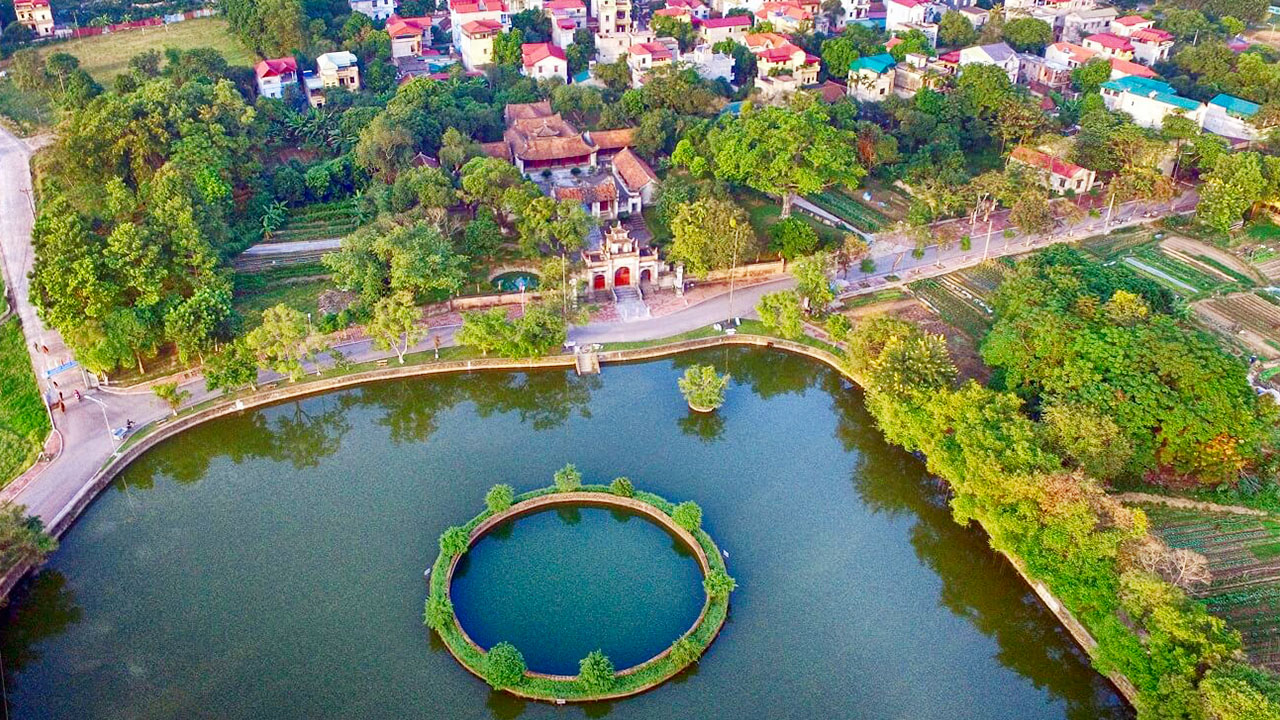
Today, the remnants of Co Loa Citadel are found across three communes: Co Loa, Duc Tu, and Viet Hung in Dong Anh District, about 16 kilometers northeast of Hanoi’s Old Quarter and 22 kilometers from Noi Bai International Airport. The area has been preserved and is now a popular historical attraction near Hanoi.
In addition to its architectural and historical value, this archaeological site is steeped in intriguing legends that form an essential part of Vietnamese national identity, especially those surrounding King An Duong Vuong. These stories enhance the site’s significance, making it not just a cultural landmark but also an engaging destination for visitors to explore Vietnam’s rich history.
Location and Significance of Co Loa Citadel
Geographic Context
Nestled approximately 17 kilometers north of present-day Hanoi, the Co Loa Citadel is prominently situated in the Dong Anh district of Vietnam. Geographically, the citadel occupies an advantageous position on the second peak of the Red River delta triangle. This strategic location near the Red and Duong Rivers facilitated not only transportation and water delivery but also provided natural defensive advantages.
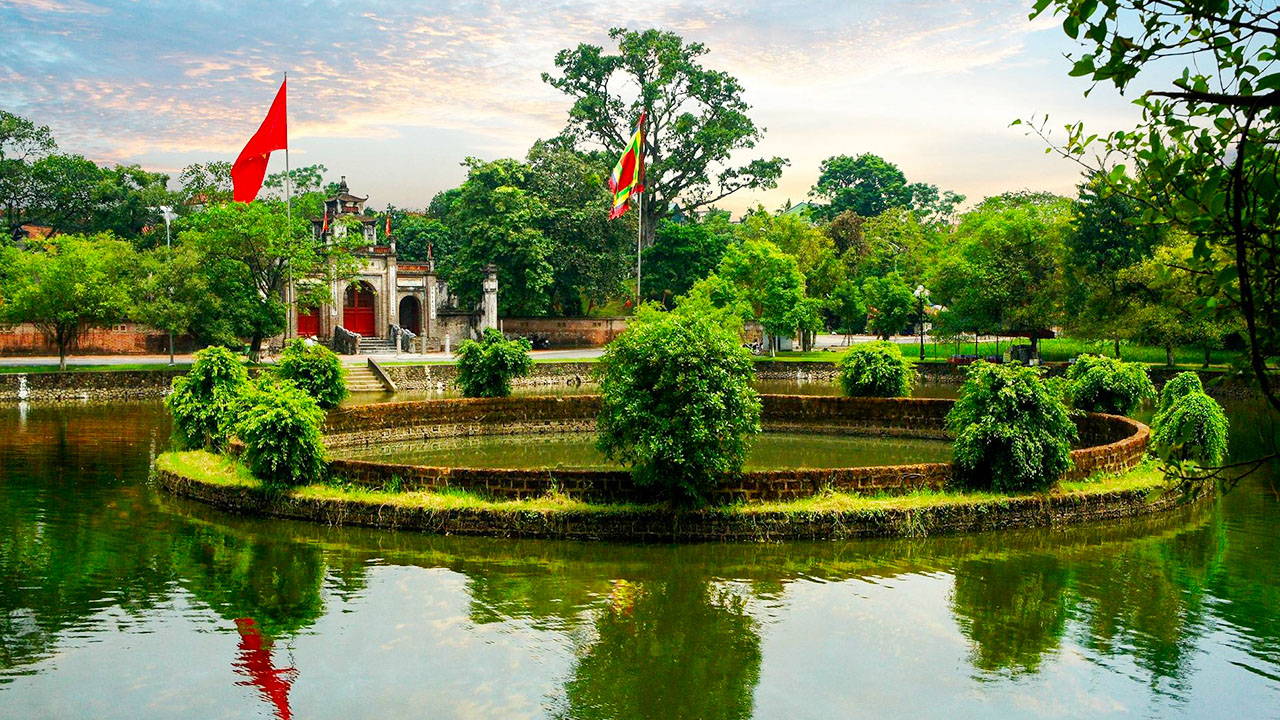
Unlike many fortresses that were built with solely defensive purposes in mind, Co Loa’s location also made it an ideal political and trade hub in ancient times. The fertile lands of the Red River delta ensured a bountiful agricultural base, which helped sustain the population and secure economic stability. Its proximity to waterways further promoted trade and cultural exchanges, embedding Co Loa deep within the economic and social veins of ancient Vietnam.
The citadel itself is a remarkable example of urban planning and defensive architecture dating back to the 3rd century BC. While its geographic position provided natural defense, its unique spiral layout and multi-layered walls (which we’ll explore in detail later) ensured that enemies found it difficult to breach.
Historical Importance
From a historical perspective, Co Loa Citadel stands as a monumental artifact of early Vietnamese civilization. Initially serving as the capital of the ancient Kingdom of Au Lac under the reign of King An Duong Vuong, the citadel later became a pivotal location during the Chinese domination of Vietnam, also known as the Van Xuan Kingdom.
The ancient Vietnamese regarded Co Loa as their first capital a foundation upon which modern Vietnam was eventually built. It symbolizes Vietnam’s early statehood, providing a cultural and political anchor for the country. Scholars and archaeologists see Co Loa as an invaluable site because it holds archaeological evidence from the Bronze Age Phung Nguyen and Dong Son cultures, offering insights into the technological advancements and societal structure of ancient Vietnam.
To put it in perspective, Co Loa’s significance is analogous to that of Rome for Italy or Athens for Greece. It is not just a relic from the past but a cornerstone of national identity. Its preservation and ongoing study are crucial for understanding the complex layers of Vietnam’s historical tapestry.
Architectural Features of Co Loa Citadel
Spiral Design and Structure
One of the most captivating elements of the Co Loa Citadel is its unique spiral-shaped design, earning it the nickname “Snail Citadel” (Loa Thành). Originally, the citadel boasted nine concentric spiral walls, designed to confuse and deter attackers. Today, only three walls remain: the outer walls, the middle walls, and the inner citadel.
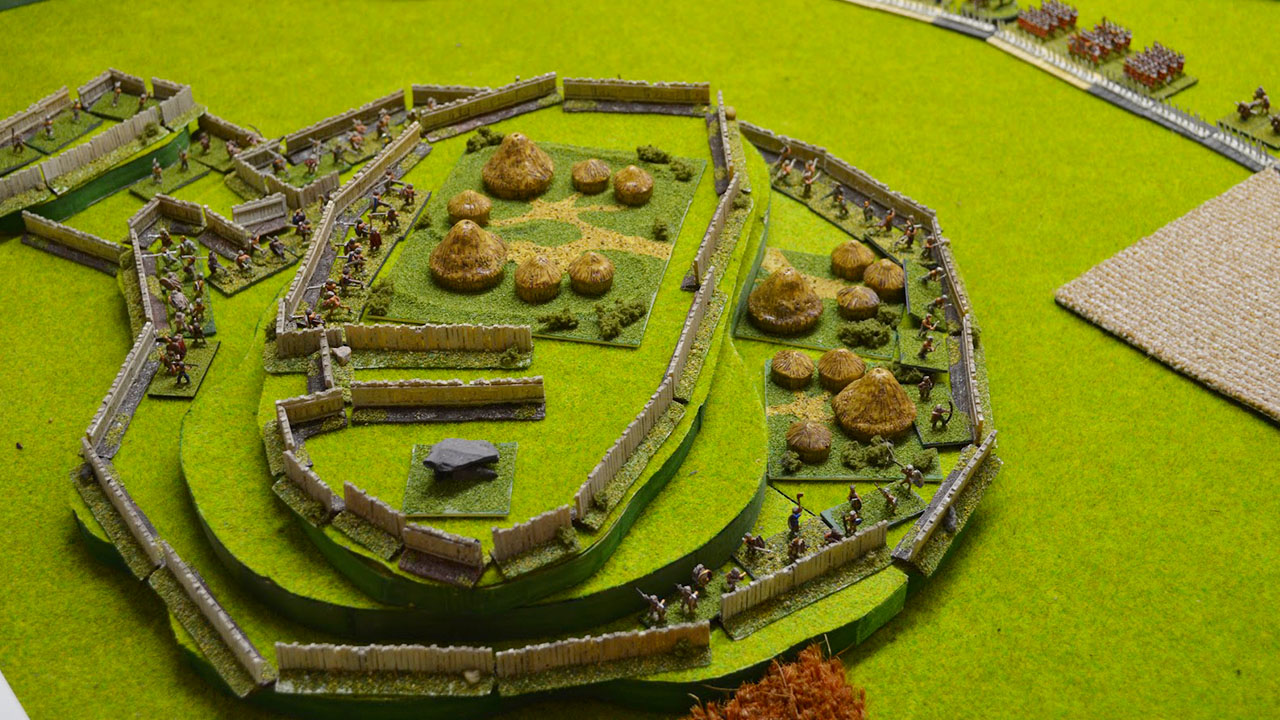
The spiral design served multiple purposes. First, it acted as a defensive maze that made it challenging for enemies to navigate, thereby providing the inhabitants with a tactical advantage. Second, this architectural feat demonstrated the high level of ingenuity and craftsmanship prevalent in ancient Vietnam. The complexity of the design can be likened to that of the labyrinth in Greek mythology, designed to be an inescapable trap for intruders.
At its prime, the citadel was an imposing structure. The outer walls extended approximately 8 kilometers in circumference, forming the first layer of defense. With average heights of 4-5 meters, these walls were capable of thwarting even the most determined assailants. Comparatively, many contemporary citadels around the world during this period relied on simple fortifications, showing that Co Loa was a step ahead in military architecture.
Walls and Defense Mechanisms
The walls of Co Loa Citadel are an embodiment of defensive ingenuity. The outer walls encircled the entire site, and within these were the middle walls, forming a secondary circle of defense. These middle walls, though narrower, were equally robust and designed to withstand significant assault.
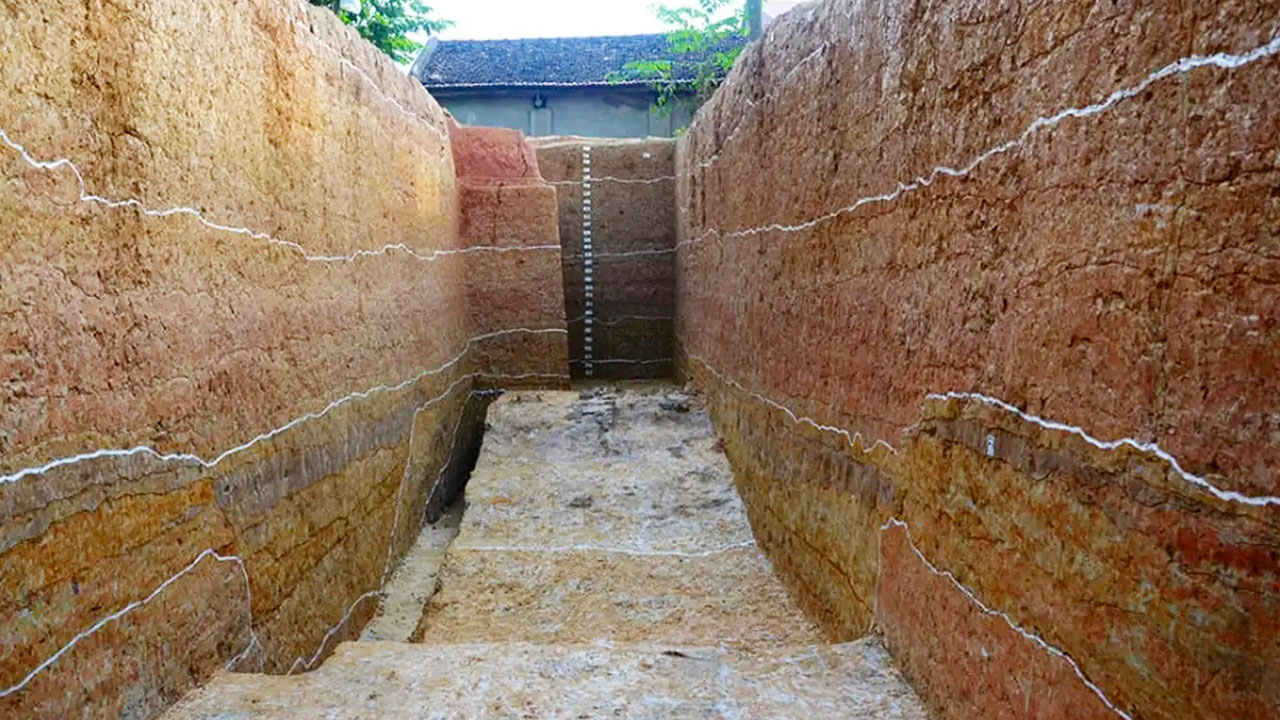
The inner citadel spanned approximately 2 square kilometers and housed the main palaces and temples where King An Duong Vuong resided. This innermost circle represented the last line of defense, safeguarding not just the king but also the kingdom’s treasures and sacred sites.
Significantly, the connections between the spiral walls and moats created a maze-like defense system. The inclusion of the Hoang River in this design added another layer of complexity, making it difficult for any invader to gain entry without substantial losses. Imagine an ancient military general faced with crossing not just one, but multiple barriers, each more formidable than the last. The design of Co Loa was nothing short of a logistical nightmare for any would-be conqueror.
Comparing Co Loa Citadel’s design with other ancient fortifications, such as the Great Wall of China or the Roman Limes, the emphasis at Co Loa was more on creating an intricate and deceptive layout rather than sheer defensive scale. This architectural strategy showcases the Vietnamese perspective on warfare: strategize in complexity rather than brute force.
In summary, the spiral design and sophisticated defense mechanisms of the Co Loa Citadel make it a remarkable example of ancient military engineering. It remains a testament to the ingenuity and resilience of the Vietnamese people during a time of frequent invasions and political turmoil.
Legends Surrounding Co Loa Citadel
The Story of King An Duong Vuong
The construction and history of Co Loa Citadel are wrapped in fascinating legends, none more captivating than the story of King An Duong Vuong, the ruler credited with building the citadel in the 3rd century BC. According to folklore, King An Duong Vuong sought to establish a new capital for the ancient kingdom of Au Lac. However, the initial attempts to construct the walls were thwarted by unknown forces, causing them to repeatedly collapse.
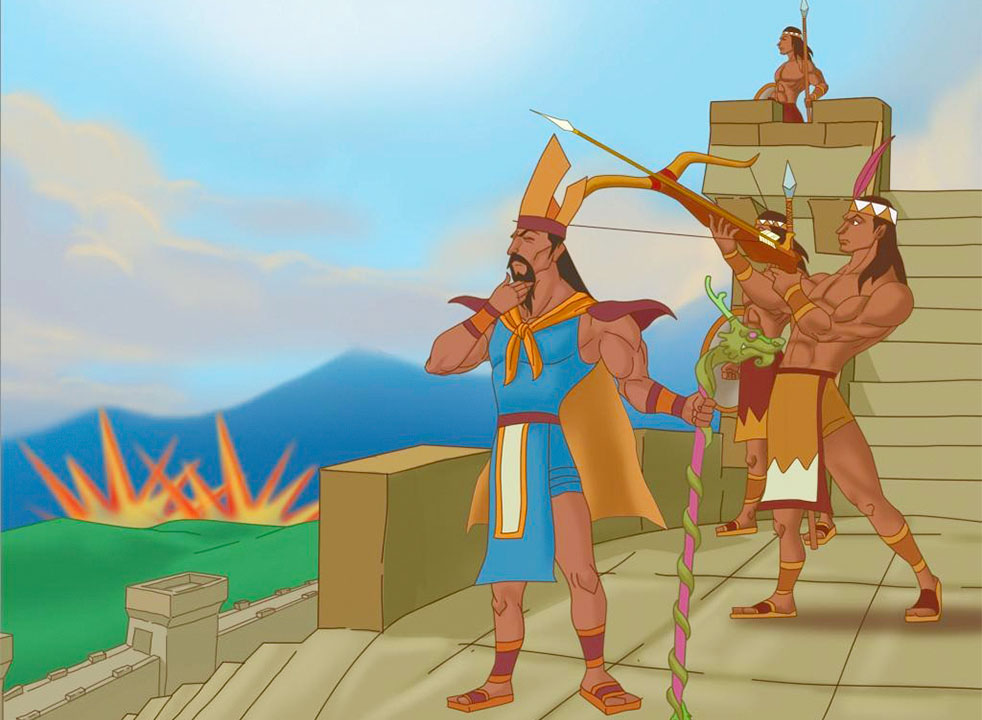
This is where divine intervention entered the lore. Legend has it that a sacred golden turtle appeared and offered its assistance to the troubled king. The turtle provided King An Duong Vuong with a magical claw, which was then used to create a powerful crossbow. Called the Lien Chau crossbow, it had the formidable ability to shoot multiple arrows simultaneously, serving as an unparalleled weapon of defense for the citadel.
This tale is not just a standalone story but embodies the spirit of resilience and divine protection that the Vietnamese people have come to cherish deeply. It portrays King An Duong Vuong not just as a ruler but as a chosen leader with divine favor, further elevating his stature in Vietnamese history and culture. Similar to the legendary figures of King Arthur and his Excalibur, King An Duong Vuong and his magical crossbow represent the ideal fusion of leadership, divine favor, and martial prowess.
Mythical Elements and Folklore
Several other legends envelop the history of Co Loa Citadel, contributing to its mystical allure. One such tale involves the tragic love story between Princess My Chau, the daughter of King An Duong Vuong, and Trong Thuy, the son of the enemy general Trieu Da. In an act of betrayal spurred by his father’s command, Trong Thuy deceived My Chau into revealing the secrets of the magical crossbow, leading to the citadel’s downfall.

Upon discovering the betrayal, King An Duong Vuong executed his daughter, and Trong Thuy, overwhelmed with guilt, committed suicide by jumping into the lake in front of Thuong Temple. According to legend, this lake became known as the ‘Pearl Well,’ and it is said that mussels in the lake absorb the blood of Princess My Chau, transforming into gleaming pearls.
These stories are more than just myths; they serve as didactic narratives that convey moral lessons about loyalty, love, and betrayal. The emotional intensity of these tales captures the hearts and minds of those who visit Co Loa, making it more than just a historical site but a living canvas of Vietnamese folklore.
In summary, the legends surrounding Co Loa Citadel do more than add layers of intrigue; they provide a rich cultural context that helps us understand the deep-seated values and beliefs of the Vietnamese people. From the divine assistance of the sacred turtle to the heart-wrenching story of Princess My Chau, these myths have contributed to Co Loa’s enduring legacy.
Cultural Relevance
Social Stratification in Ancient Times
The Co Loa Citadel, as the political and military center of ancient Au Lac, provides a fascinating glimpse into the social structure of early Vietnamese society. The citadel’s layout, with its concentric walls and hierarchical zoning, offers clues about social stratification and the division of roles among its inhabitants.
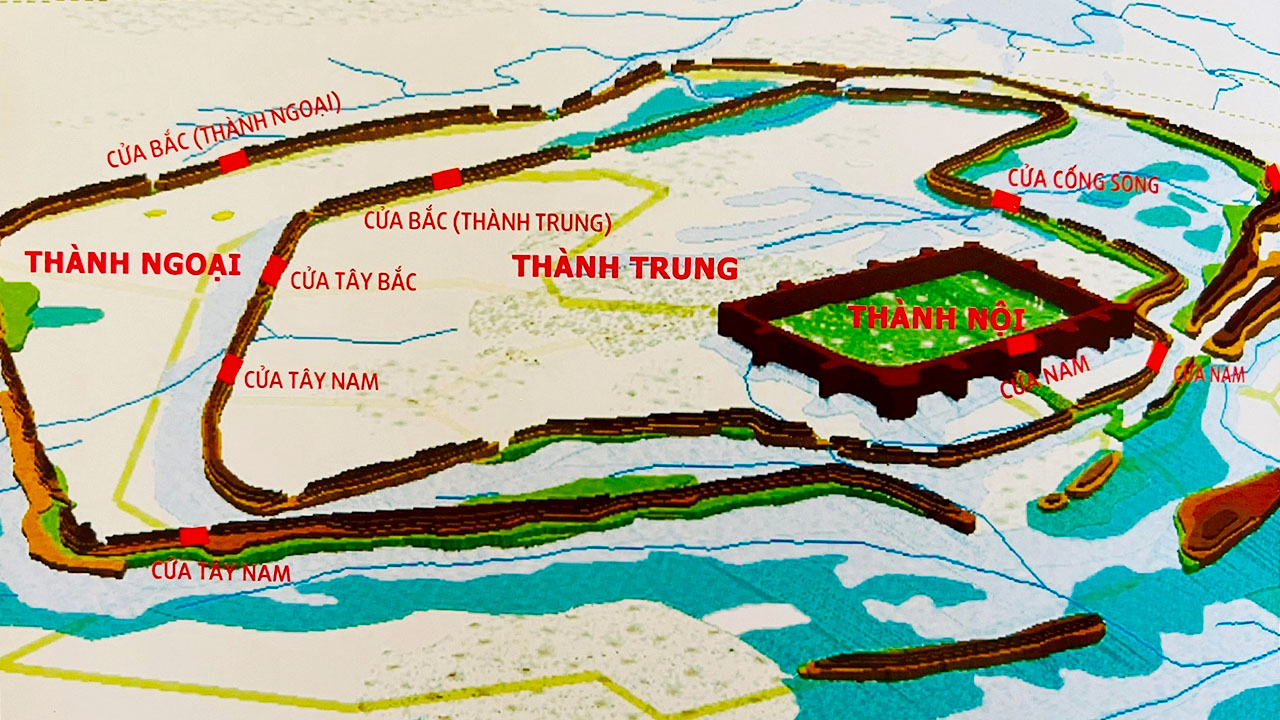
At the core of the citadel lay the residences of the king, his mistresses, and high-ranking mandarins. This innermost circle symbolizes the ruling elite, who held both political and spiritual authority over the kingdom. The presence of multiple palaces and temples within this area underscores the centralization of power and highlights the crucial role of ceremonial and administrative duties.
Outside the inner circle, the middle walls likely housed the noble class, including military generals like Cao Lo, who was instrumental in the citadel’s construction and the invention of the Lien Chau crossbow. This class served as the kingdom’s primary line of defense, showcasing their elevated status and responsibility within society.
Further out, the commoners and laborers resided near the outer walls, reflecting a clear demarcation of social hierarchy. These outer areas, although less privileged, were vital for sustaining the citadel’s daily operations through agricultural labor, craft production, and other essential services.
When compared to other ancient societies, such as the rigid caste system of ancient India or the hierarchical feudal system of medieval Europe, the social stratification at Co Loa appears both distinct and reminiscent. The concentric layout of the citadel not only served defensive purposes but also visually and physically represented the social order, making Co Loa an early archetype of structured urban planning.
Contributions to Vietnamese Identity
Over the centuries, Co Loa Citadel has become more than just a historical site; it has metamorphosed into a symbol of Vietnamese resilience, ingenuity, and cultural identity. This fortified settlement captures the essence of a people who have continually fought to preserve their sovereignty and heritage.
The stories and legends associated with Co Loa create a rich tapestry that weaves together various aspects of Vietnamese culture from the reverence of divine intervention to the human emotions of love, betrayal, and sacrifice. These narratives have transcended generations, embedding themselves in the collective consciousness of the Vietnamese people.
Today, Co Loa Citadel stands as a revered cultural landmark and a source of immense national pride. It is a tangible representation of Vietnam’s early statehood and struggles against external threats. Each year, thousands of visitors both locals and tourists flock to the citadel, eager to connect with their heritage and pay homage to their ancestors.
In essence, Co Loa Citadel is not merely an archaeological site but a living monument that continues to inspire and unite the Vietnamese people. Its enduring legacy serves as a cornerstone for the nation’s historical consciousness, reminding all who visit of the resilience and ingenuity that have been hallmarks of Vietnamese culture throughout the centuries.
Co Loa Citadel Festival
Dates and Activities of the Festival
The Co Loa Citadel Festival, held annually on the 5th and 6th day of the first lunar month (around February), is a vibrant celebration honoring King An Duong Vuong and the citadel’s historical significance. This event transforms the usually tranquil ruins into a bustling epicenter of cultural activities, drawing locals and tourists alike.
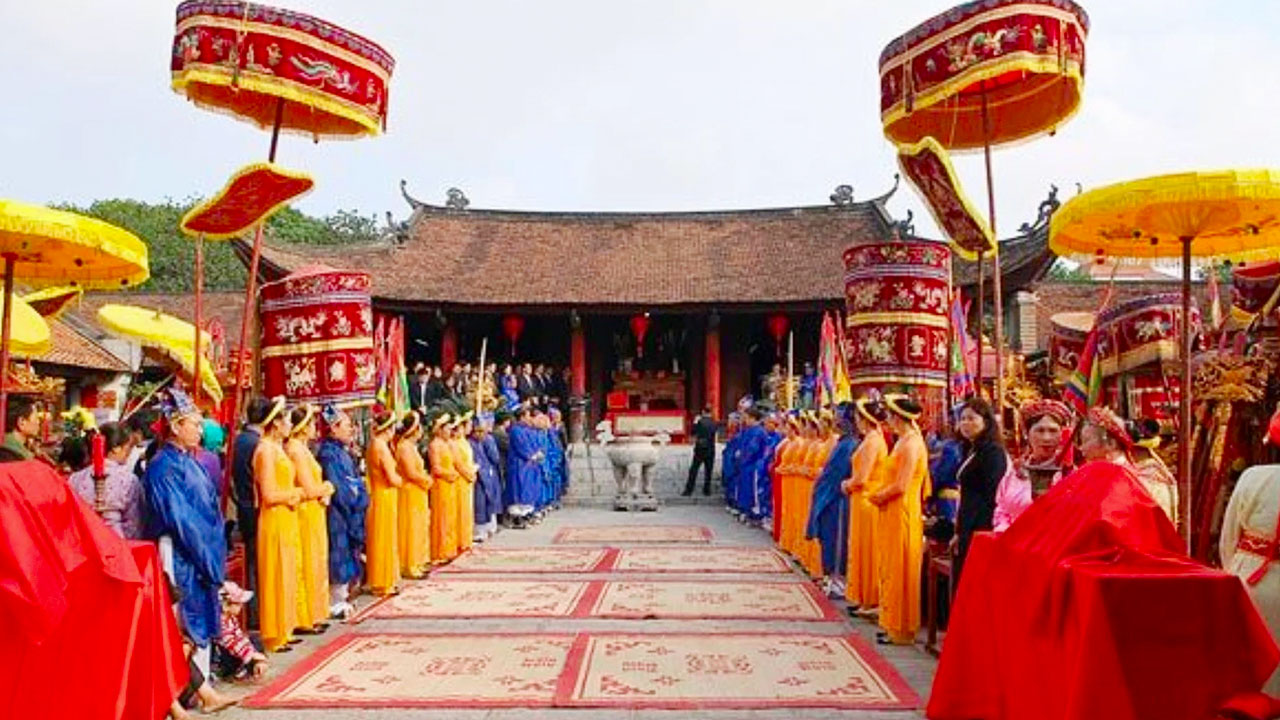
The festival begins early in the morning on the 6th day with a solemn procession from the chief officiant, carrying flags, fans, and ceremonial parasols to the Upper Temple. The ceremony is conducted amid the solemn music of the eight-tone ensemble, evoking a sense of reverence and nostalgia. Each village’s palanquin follows in the procession, advancing slowly and carefully, immersing the participants and spectators in a lively atmosphere filled with traditional music and vibrant colors.
Once the main ceremony concludes, the festival grounds come alive with various entertainment activities and artistic performances. These include wrestling matches, martial arts demonstrations, and folk singing contests. Water puppet shows and Quan Ho singing at Ngoc Well are particularly popular, drawing large crowds eager to experience these traditional art forms.
Rituals and Community Involvement
The Co Loa Citadel Festival is not just a spectacle but a deeply rooted cultural event that fosters community involvement and preserves ancient traditions. Rituals conducted during the festival, such as the offering of incense and the recitation of ancestral hymns, highlight the spiritual connection between the present and the past. These ceremonies are a means of paying homage to the ancestors and seeking their blessings for the coming year.
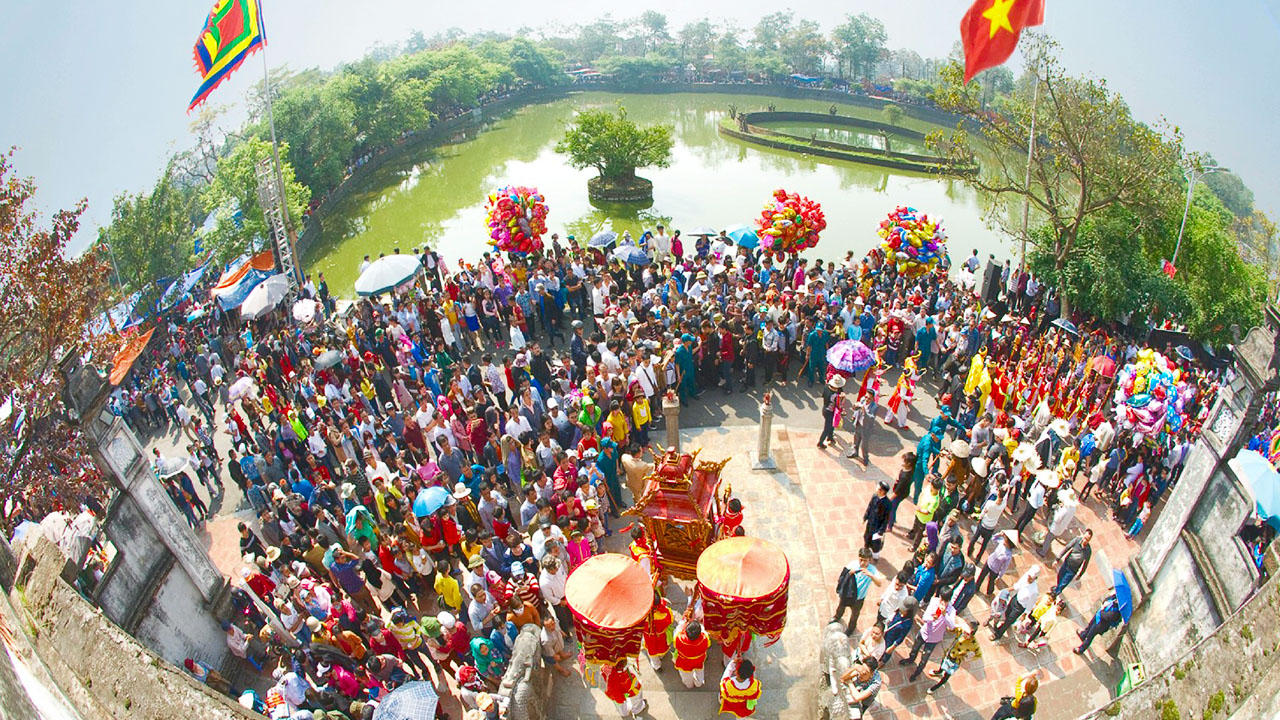
Community participation is a cornerstone of the festival. Local villages and communities play an essential role in organizing and carrying out the festivities. Each village takes pride in presenting its own palanquin and participating in various traditional games and performances. This involvement fosters a sense of unity and pride among the villagers, strengthening the cultural fabric of the region.
In essence, the Co Loa Citadel Festival is more than just a celebration; it is a reaffirmation of cultural identity and community spirit. It provides a unique opportunity for participants and spectators alike to connect with Vietnam’s rich history and traditions, creating lasting memories and a deeper appreciation for the nation’s heritage.
Visiting Co Loa Citadel
How to Get There
Visiting Co Loa Citadel is a journey into the heart of Vietnam’s ancient history. Located about 17 kilometers north of Hanoi, in the Dong Anh district, the citadel is easily accessible from the capital city. Here are some practical options for reaching this historical site:
- Motorbike/Car: If you prefer a flexible and leisurely trip, renting a motorbike or car is ideal. The route from Hanoi to Co Loa is relatively straightforward, taking approximately 30-45 minutes depending on traffic. You can follow Highway 23, which leads directly to Dong Anh, and then follow signs to Co Loa.
- Bus: For those who prefer public transportation, several bus routes connect Hanoi to Dong Anh. Bus routes like number 46 from My Dinh bus station or number 43 from Long Bien bus station are convenient options. The journey typically takes an hour, depending on traffic conditions.
- Taxi/Grab: Alternatively, you can opt for a taxi or a Grab car for a hassle-free and comfortable journey. This option, while slightly more expensive, offers the added benefit of direct drop-off at the entrance of the citadel.
Visitor Information and Tips
Once you arrive at Co Loa Citadel, here are some essential details and tips to ensure a fulfilling visit:
- Entrance Fee: The entrance fee to the Co Loa Citadel is modest, at 10,000 VND (approximately $0.40 USD). This fee grants access to the entire site, including the temples, museums, and surrounding grounds.
- Operating Hours: The citadel is open daily from 7:30 AM to 5:00 PM. It is advisable to visit early in the morning or late in the afternoon to avoid the midday heat and crowds.
- Best Time to Visit: While the citadel can be visited year-round, the annual Co Loa Festival on the 6th day of the lunar new year is an exceptionally vibrant time to experience the site’s cultural significance. However, if you prefer a quieter visit, weekdays are generally less crowded.
- What to Wear: Comfortable walking shoes are recommended, as exploring the citadel involves walking along uneven and possibly muddy paths. Light, breathable clothing is advisable, especially in the warmer months, and carrying a hat and sunscreen can be beneficial.
- Guided Tours: For a deeper understanding of the site’s history and architecture, consider hiring a local guide who can provide insights and anecdotes that you might miss otherwise.
In summary, visiting Co Loa Citadel is a richly rewarding experience that offers a glimpse into Vietnam’s ancient past. Whether you’re a history buff, a cultural enthusiast, or a curious traveler, the citadel’s architectural marvels, legendary tales, and serene surroundings provide a captivating journey into the heart of Vietnamese heritage.


